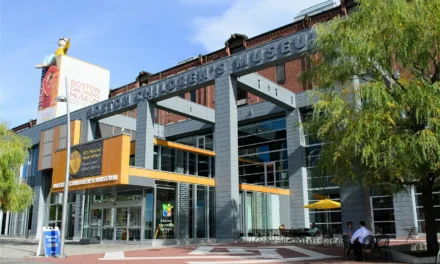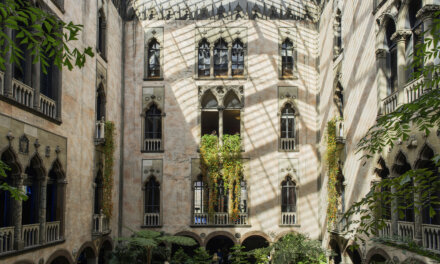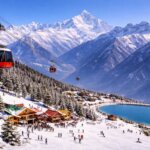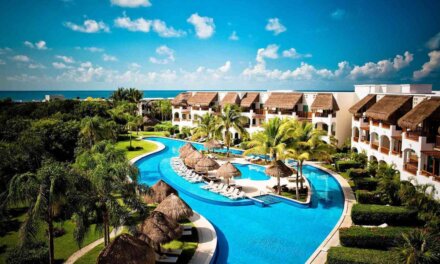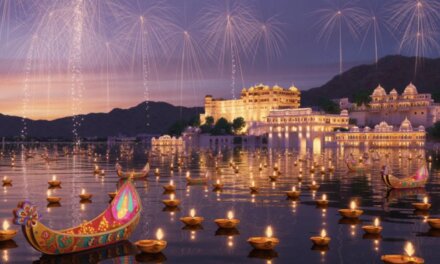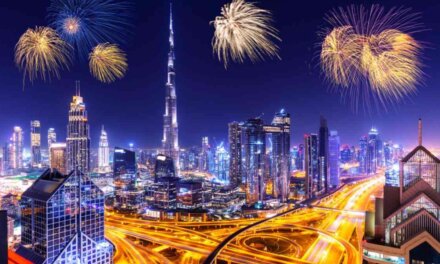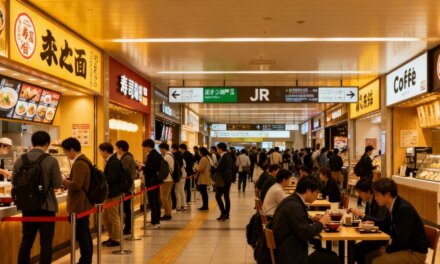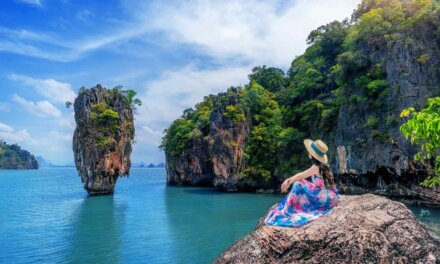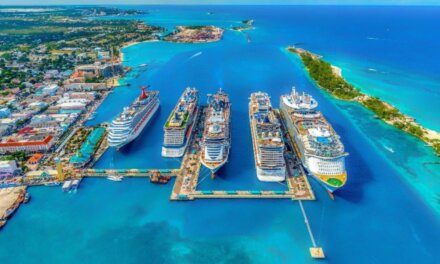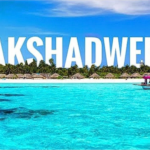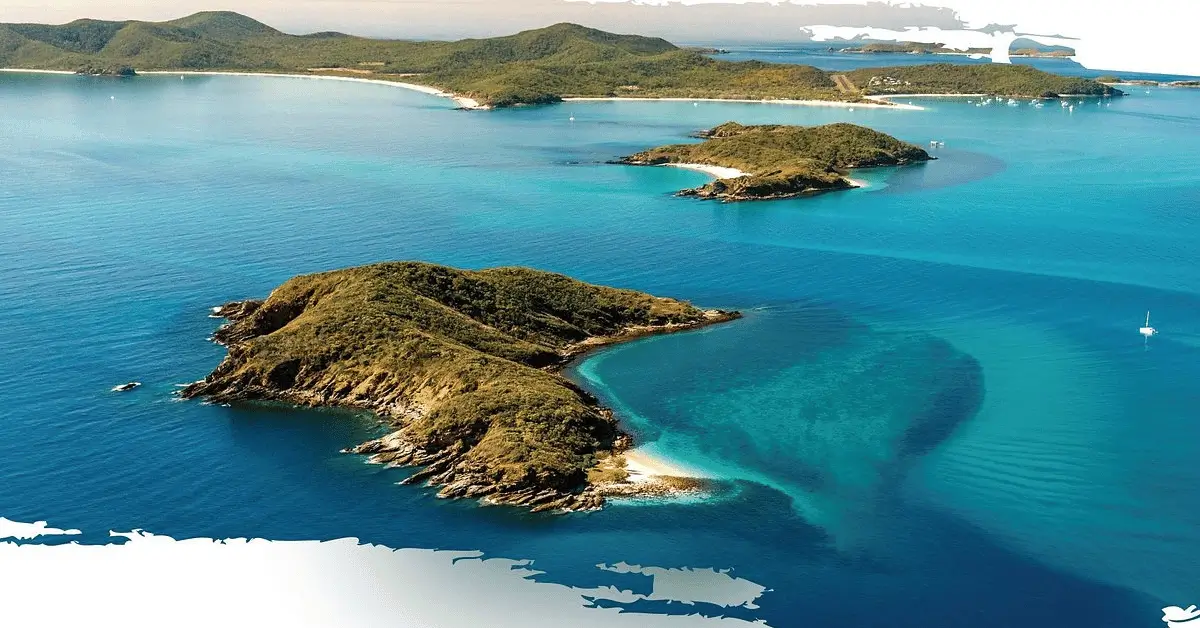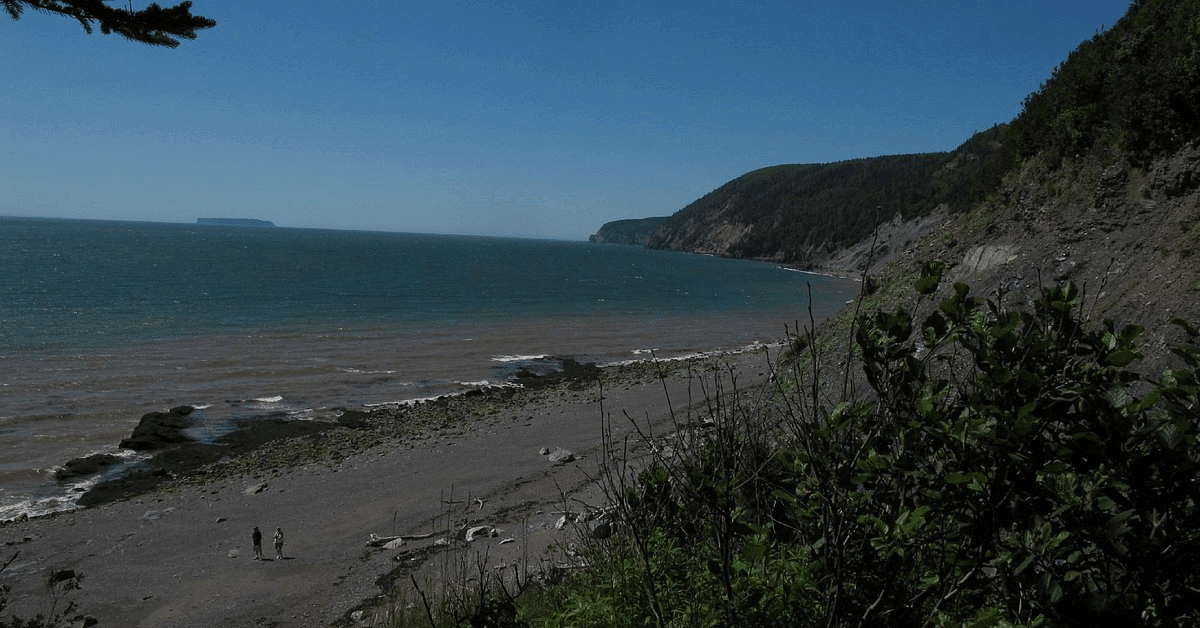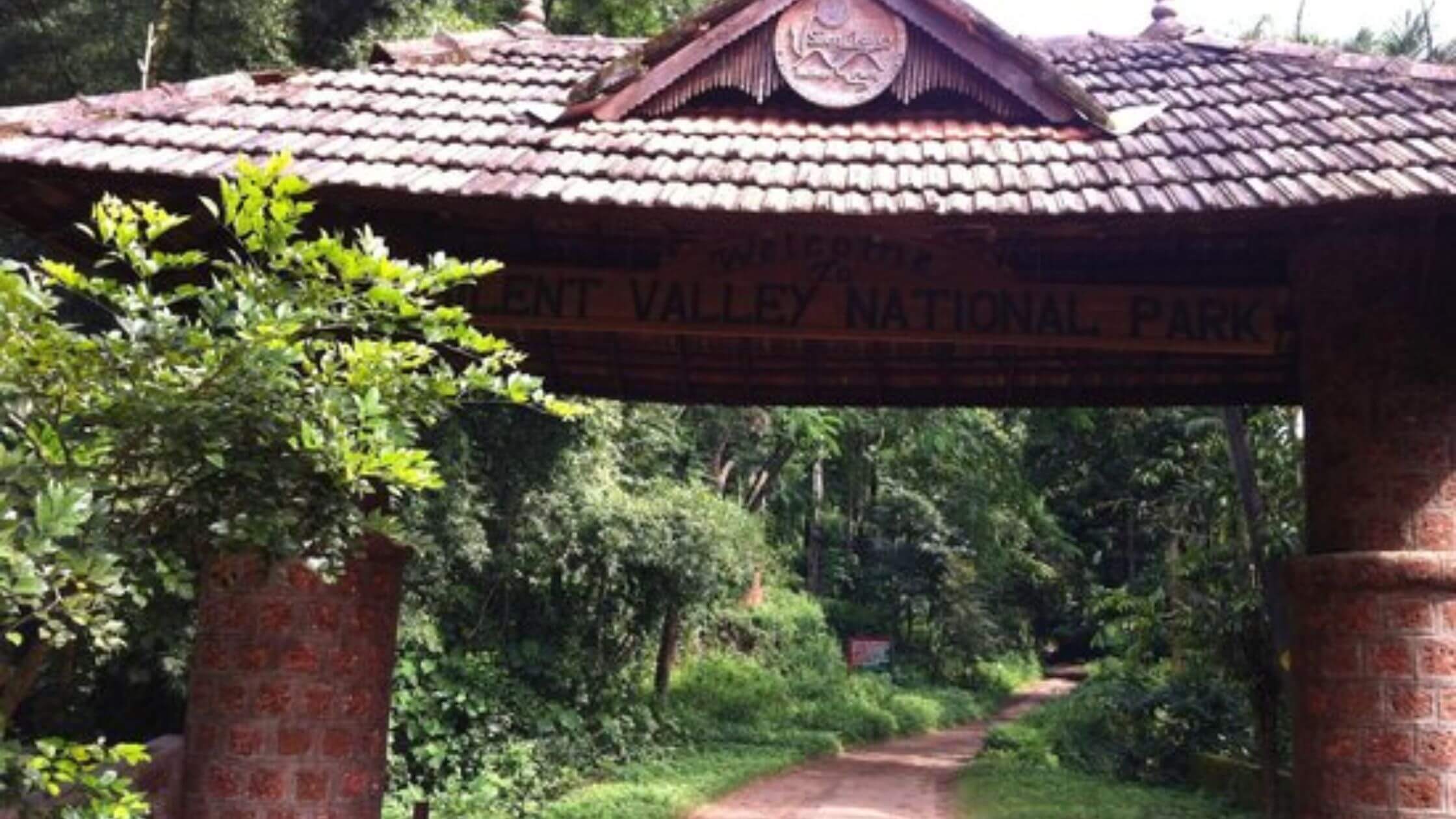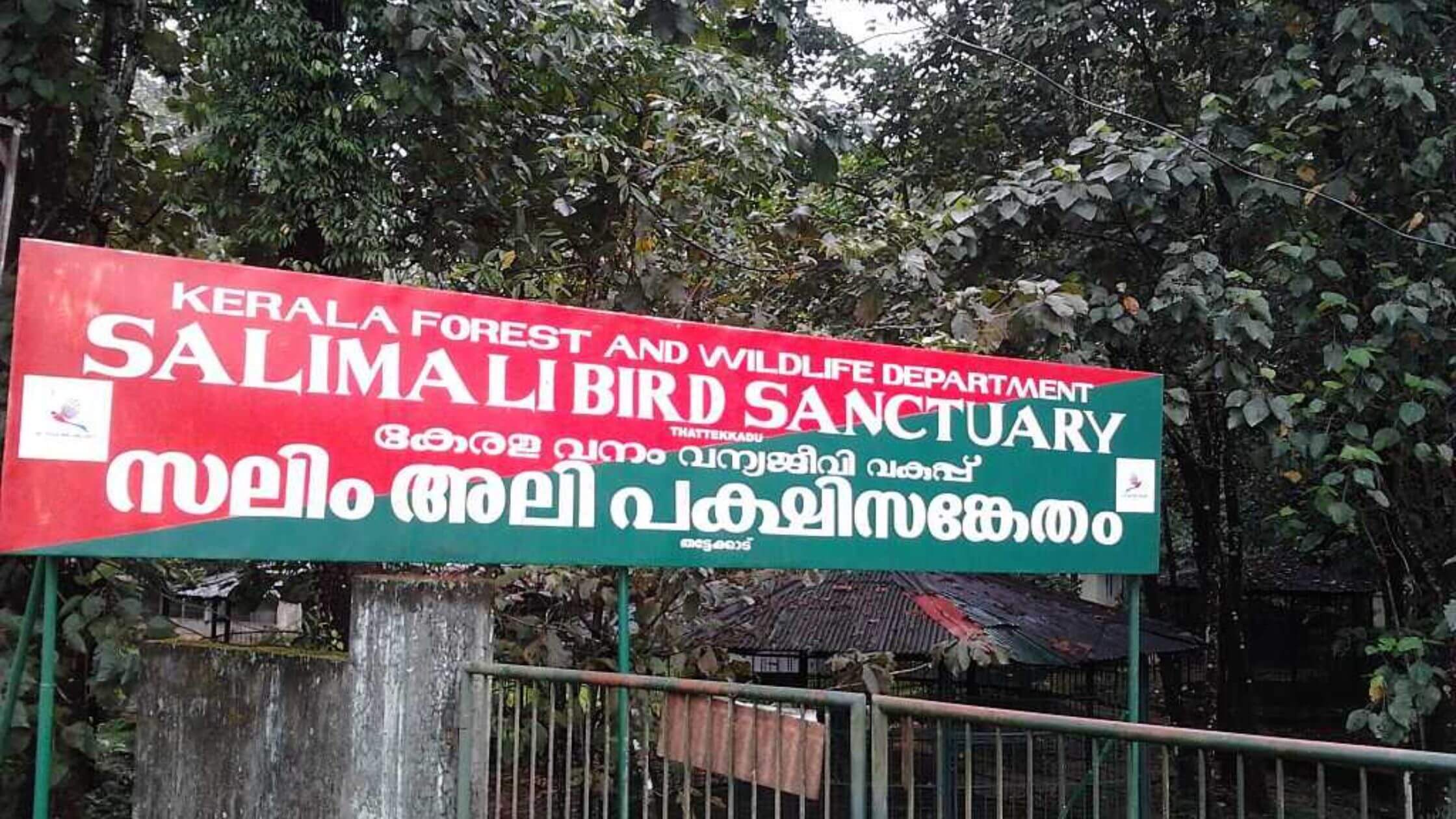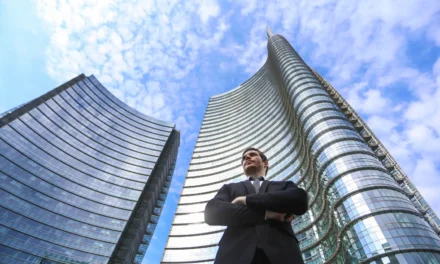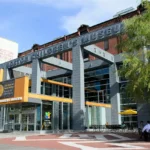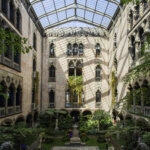
Hot Springs Heaven: Unraveling the Wonders of in Hells of Beppu – Japan
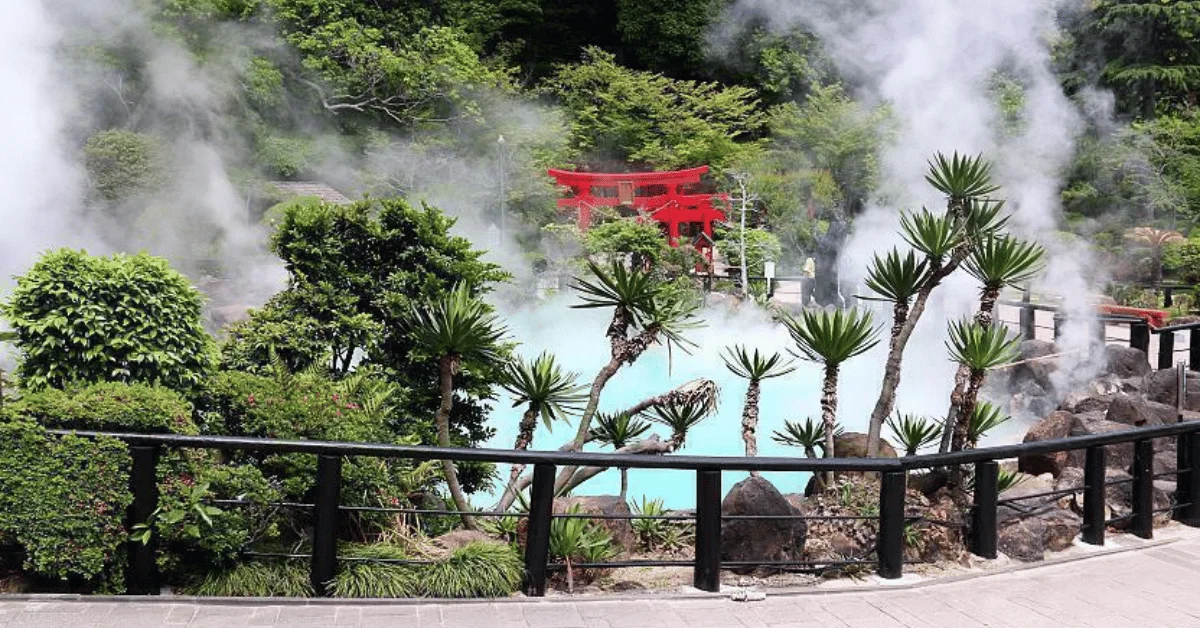
Table of Contents
- There are seven different hells in Beppu, each offering visitors a distinct experience
- Quick Information about Hells of Beppu
- Best Time to Visit Hells of Beppu
- Ways to Reach Hells of Beppu
- Activities To Do At Hells Of Beppu
- Hells of Beppu Opening Hours and Entry Fees
- Food Options near Hells of Beppu
- Accommodation Options near Hells of Beppu
- Places to Visit near Hells of Beppu
The Hells of Beppu is a famous tourist attraction in Beppu, Japan. It is a collection of hot springs and geothermal features, each with unique characteristics and vibrant colors. The name “Hells” comes from the intense heat and steam that emanates from these thermal pools, making them seem like otherworldly, infernal landscapes.
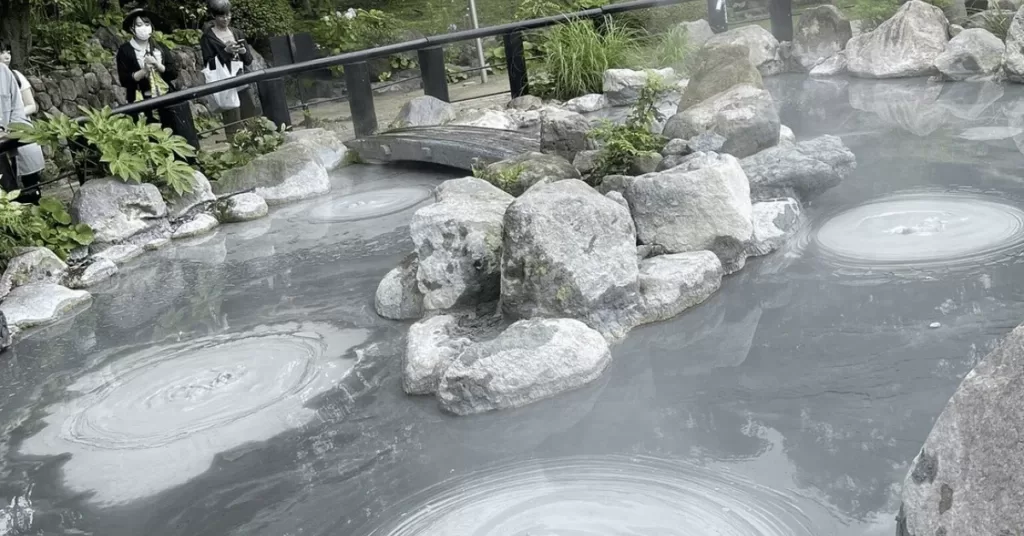
There are seven different hells in Beppu, each offering visitors a distinct experience
Chinoike Jigoku (Blood Pond Hell)
Chinoike Jigoku, also known as Blood Pond Hell, is a famous tourist attraction in Beppu, Japan. It is one of the nine hells (jigoku) of Beppu, which are natural hot springs with various unique characteristics and colors.
As the name suggests, Chinoike Jigoku is renowned for its deep red color, resembling blood, caused by the high iron content and red clay in the hot spring water. The intense red hue of the pond makes it quite striking and eerie, attracting visitors from all over the world.
The water in Chinoike Jigoku is incredibly hot, reaching temperatures of around 78 to 90 degrees Celsius (172 to 194 degrees Fahrenheit). Because of its extreme heat, the pond is not suitable for bathing, unlike some of the other hells in Beppu.
In addition to its captivating color, the area around Chinoike Jigoku features beautiful gardens, foot baths, and souvenir shops, providing visitors with a pleasant and relaxing experience. You can stroll along the walkways surrounding the pond, learning about the geological and cultural significance of the site.
Beppu’s Jigoku, including Chinoike Jigoku, have become popular tourist destinations due to their unique features and cultural importance. Visitors can enjoy the natural beauty, learn about the geothermal activity in the region, and even indulge in some local delicacies cooked using the hot spring steam.
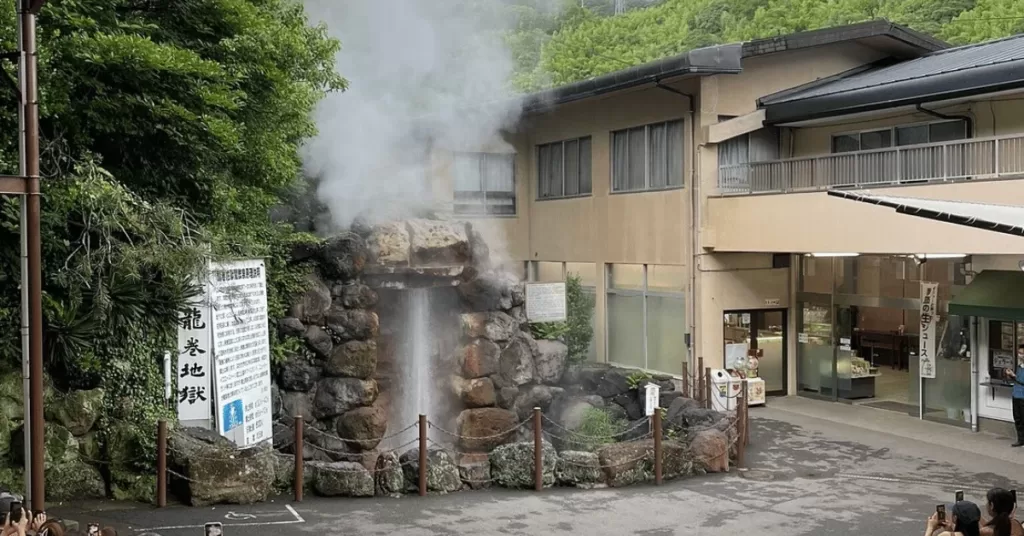
Tatsumaki Jigoku (Tornado Hell)
Tatsumaki Jigoku, also known as Tornado Hell, is another captivating hot spring in the famous Beppu Hells (jigoku) located in Beppu, Japan.
Tatsumaki Jigoku stands out from the other hells due to its unique natural phenomenon – a powerful geyser that erupts like a mini-tornado. The geyser shoots scalding hot water up to a height of about 30 meters (approximately 98 feet) into the air, creating a mesmerizing and awe-inspiring sight.
Unlike Chinoike Jigoku, Tatsumaki Jigoku is not known for its vibrant colors but rather for its impressive and forceful eruption. The geyser erupts at regular intervals, which adds to the excitement and anticipation of visitors who gather around the viewing platform to witness the spectacle.
The water in Tatsumaki Jigoku is extremely hot, with temperatures ranging from 97 to 99 degrees Celsius (approximately 207 to 210 degrees Fahrenheit). Due to the scalding temperatures and forceful eruptions, Tatsumaki Jigoku is not suitable for bathing, and visitors are required to keep a safe distance from the geyser.
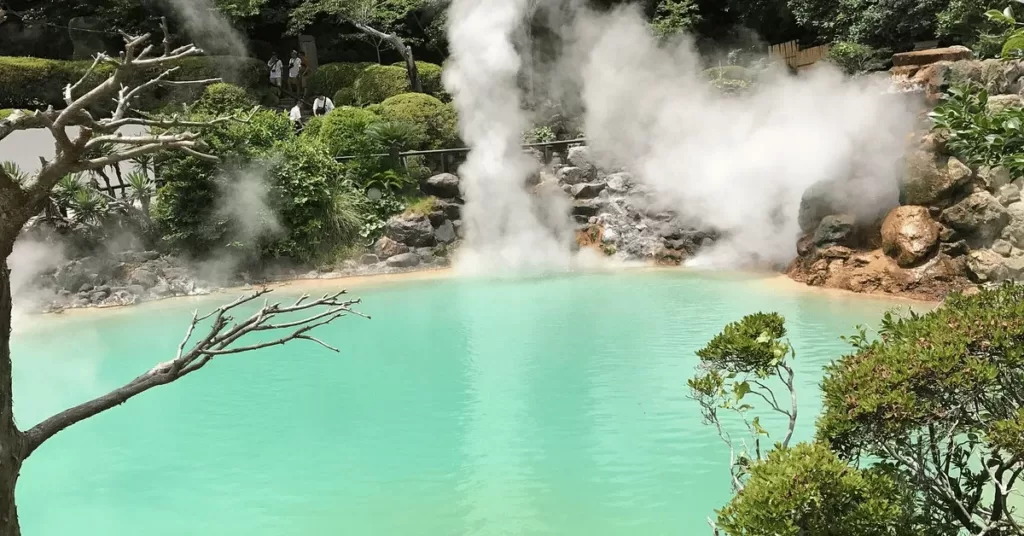
Kamado Jigoku
Kamado Jigoku, also known as Cooking Pot Hell, is one of the nine famous hot springs (jigoku) located in Beppu, Japan. Each of these hells has its own distinct characteristics and attractions, making them popular tourist destinations.
As the name suggests, Kamado Jigoku is associated with cooking and is quite different from the previously mentioned hells. Instead of being a hot spring for bathing or an erupting geyser, Kamado Jigoku is known for its boiling mud pools. These bubbling mud pots give the impression of a giant, simmering cauldron, hence the name “Cooking Pot Hell.”
The mud pools at Kamado Jigoku are created by the high temperatures underground, causing water to mix with the surrounding volcanic ash and minerals. The result is thick and viscous mud that bubbles and boils due to the geothermal activity beneath the surface. The mud’s unique properties and temperature create a fascinating and somewhat eerie sight for visitors.
The area around Kamado Jigoku is well-developed with wooden walkways and viewing platforms, allowing tourists to observe the boiling mud from a safe distance. You can also experience the traditional way of cooking food using the natural heat of the hot springs. Local delicacies like steamed vegetables and eggs, cooked by burying them in the hot sand, are popular treats for visitors to enjoy.
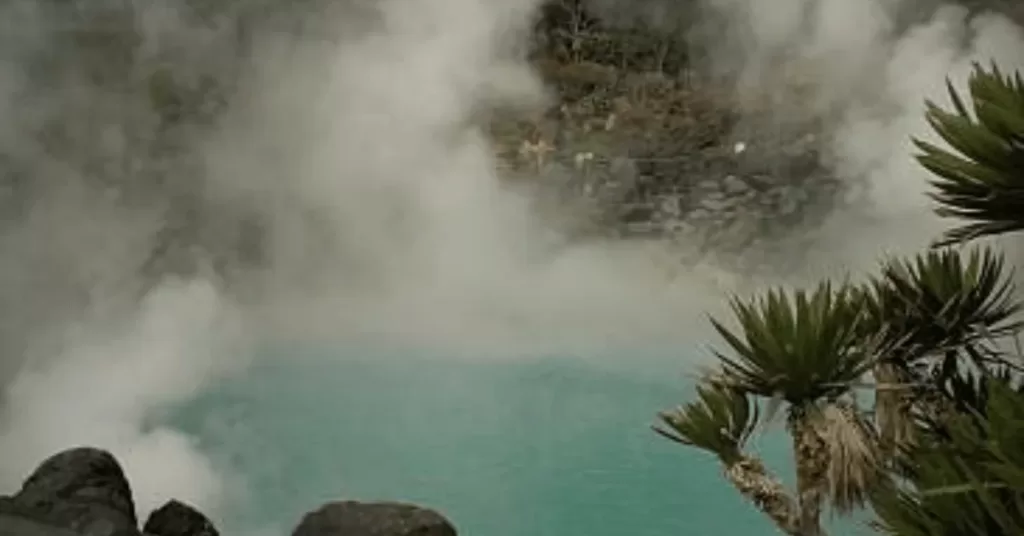
Oniishibozu Jigoku
Oniishibozu Jigoku, also known as Shaven Monk’s Head Hell, is another intriguing hot spring (jigoku) located in the Beppu region of Japan. Like the other hells in Beppu, Oniishibozu Jigoku offers a unique and captivating experience for visitors.
The name “Shaven Monk’s Head Hell” comes from the appearance of the hot spring, which resembles the shaved heads of Buddhist monks. The surface of the hot spring water is covered in countless bubbling mud geysers that look like the bald heads of monks, hence the name.
Oniishibozu Jigoku is known for its milky-white, cloudy appearance, which is caused by the high concentration of minerals and the boiling mud beneath the surface. The water is extremely hot, typically reaching temperatures around 99 to 100 degrees Celsius (approximately 210 to 212 degrees Fahrenheit).
Visitors can observe the unique landscape of Oniishibozu Jigoku from designated viewing areas, which ensure both safety and preservation of the delicate environment. The bubbling mud geysers are constantly active, adding to the allure of this natural wonder.
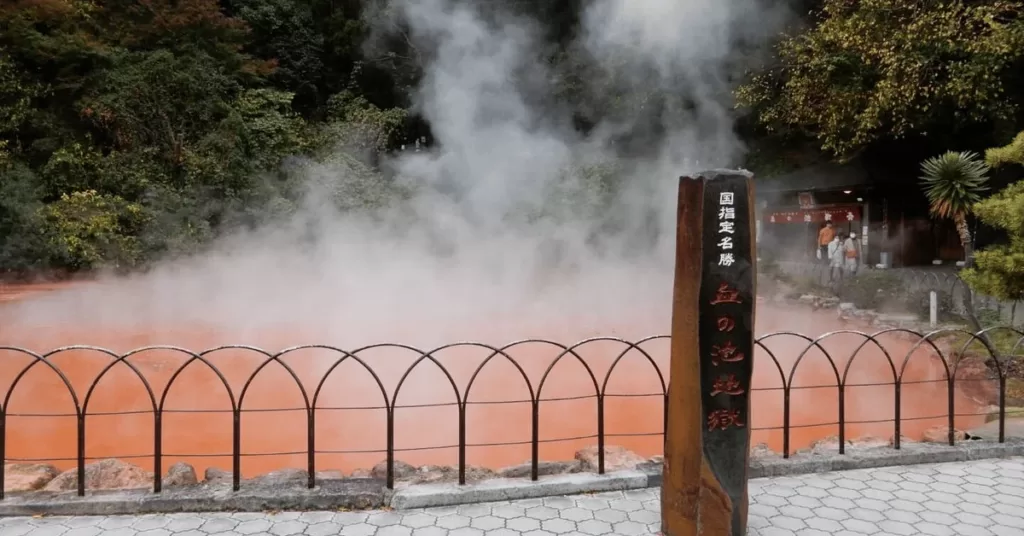
Umi Jigoku (Sea Hell)
Umi Jigoku, also known as Sea Hell, is one of the most striking and picturesque hot springs (jigoku) in the Beppu region of Japan. It is one of the nine hells of Beppu, each offering its own distinct characteristics and attractions.
What sets Umi Jigoku apart from the others is its stunning cobalt-blue waters, which give the hot spring its name, “Sea Hell.” The vibrant blue color is a result of the high-temperature mineral-rich water that gushes up from deep underground. The water at Umi Jigoku is extremely hot, reaching temperatures around 98 to 99 degrees Celsius (approximately 208 to 210 degrees Fahrenheit).
Aside from its striking blue waters, Umi Jigoku features a large pond surrounded by beautifully landscaped gardens with various types of flora. The juxtaposition of the vivid blue water against the lush greenery creates a visually captivating scene for visitors.
One of the unique attractions at Umi Jigoku is the Demon’s Cave, a small underground chamber near the pond. The cave is adorned with traditional Japanese demon statues, adding a touch of folklore and mythology to the experience.
The area around Umi Jigoku is thoughtfully developed to accommodate visitors with well-maintained walkways and viewing platforms, allowing tourists to admire the hot spring from different angles safely.
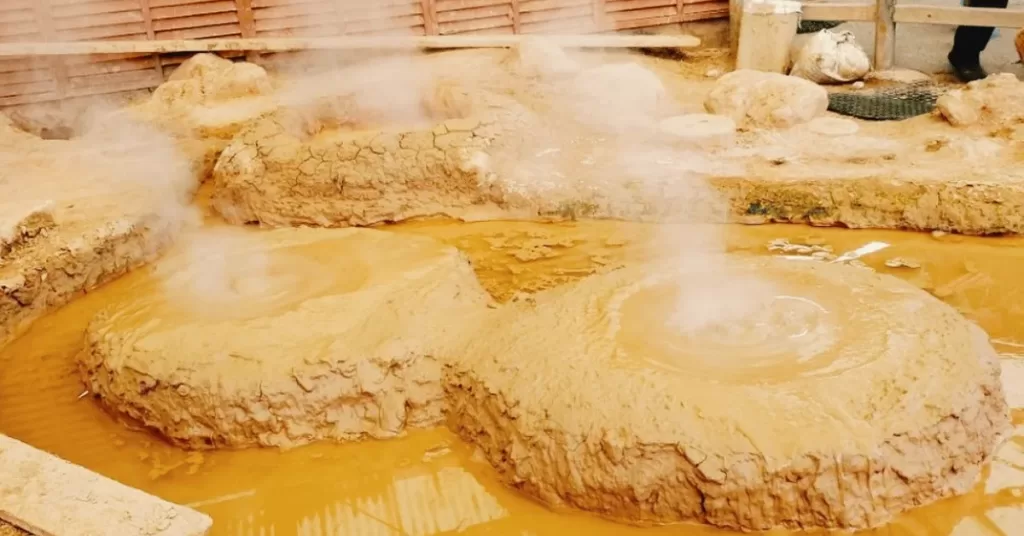
Oniyama Jigoku (Monster Mountain Hell)
Oniyama Jigoku, also known as Monster Mountain Hell, is another fascinating hot spring (jigoku) in the Beppu area of Japan. This hell stands out due to its focus on showcasing various animals, particularly crocodiles.
As the name suggests, Monster Mountain Hell is home to a large population of crocodiles. The hot spring water here is incredibly hot, providing a suitable environment for these reptiles to thrive. Visitors can observe these prehistoric creatures up close to designated viewing areas, ensuring both safety and preservation.
In addition to the crocodile enclosures, Monster Mountain Hell features other attractions, including a small geothermal area with mud pots and geysers. The boiling mud and steam add to the infernal atmosphere of this unique hot spring.
The area around Oniyama Jigoku is thoughtfully developed with walkways and bridges, providing visitors with a convenient way to explore the attraction. There are also shops and restaurants offering crocodile-themed souvenirs and local delicacies for tourists to enjoy.
Oniyama Jigoku offers a different perspective on the diversity of hot springs in Beppu, combining the unique characteristics of geothermal activity with the presence of exotic animals like crocodiles.
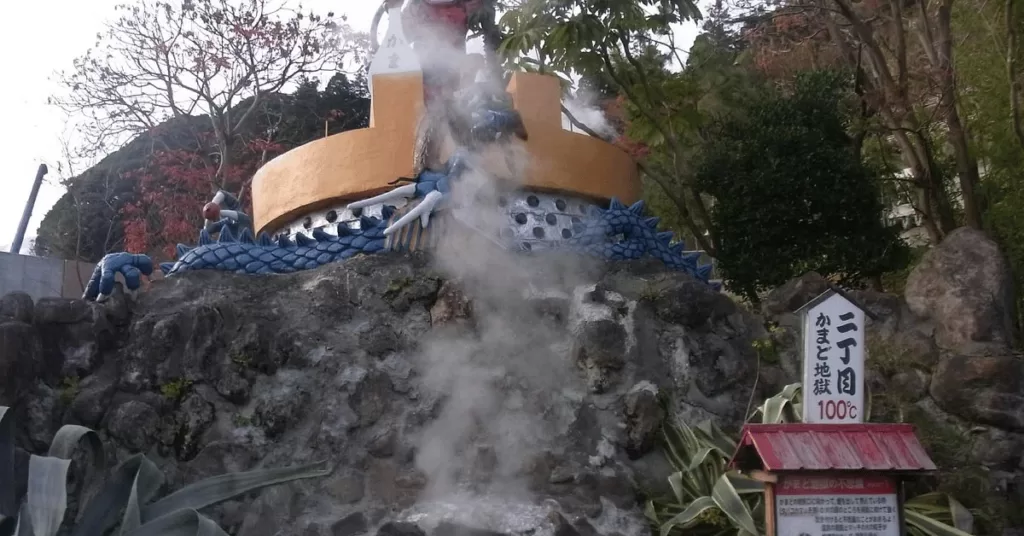
Shiraike Jigoku (White Pond Hell)
Shiraike Jigoku, also known as White Pond Hell, is one of the renowned hot springs (jigoku) in Beppu, Japan. It is part of the famous “hells” of Beppu, each offering a unique and captivating experience for visitors.
As the name suggests, Shiraike Jigoku is distinguished by its milky-white, cloudy appearance. The hot spring’s water has a high concentration of minerals, which gives it a striking white color. The water temperature at Shiraike Jigoku is scalding, usually ranging from 85 to 98 degrees Celsius (185 to 208 degrees Fahrenheit).
The main feature of Shiraike Jigoku is the large pond, which is surrounded by beautifully landscaped gardens and adorned with statues and decorations. The contrast between the white water and the vibrant greenery creates a visually stunning and serene atmosphere for visitors to enjoy.
One of the highlights of visiting Shiraike Jigoku is the foot bath located nearby, where visitors can immerse their feet in the naturally warm water while taking in the picturesque surroundings. This foot bath experience adds an extra layer of relaxation to the visit.
Quick Information about Hells of Beppu
| Hell Name | Description | Unique Feature |
|---|---|---|
| Chinoike Jigoku | Strikingly red-colored pool | High iron content in the water |
| Tatsumaki Jigoku | Geyser-like eruptions | Powerful bursts of hot water |
| Umi Jigoku | Cobalt-blue pool surrounded by gardens | Intense blue color |
| Oniyama Jigoku | Hot spring enclosures for animals | Houses various animals like crocodiles |
| Shiraike Jigoku | Milky-white waters | Abundant dissolved minerals |
Best Time to Visit Hells of Beppu
| Season | Best Time to Visit | Reasons to Visit |
|---|---|---|
| Late Autumn | October | Comfortable temperatures, fewer crowds |
| Winter | November to February | Cooler weather, pleasant exploration |
| Early Spring | March to April | Mild temperatures, beautiful sights |
Ways to Reach Hells of Beppu
| Transportation | Description |
|---|---|
| By Air | Nearest Airport: Oita Airport (OIT); Domestic and limited international flights available; From Oita Airport, take a bus or train to Beppu |
| By Train | Beppu is well-connected by train services; Main Railway Station: Beppu Station; Accessible from major cities (Tokyo, Osaka, Fukuoka) via Shinkansen (bullet train) or local trains |
| By Bus | Various bus routes available to Beppu; Check local bus services for schedules and routes |
Activities To Do At Hells Of Beppu
Visiting the Hells of Beppu provides a fascinating and immersive experience. While you can’t bathe in most of these hot springs due to their extreme temperatures, there are several activities you can enjoy at the Hells of Beppu:
Sightseeing: The hells of Beppu are a stunning display of natural phenomena. Each hot spring has its unique characteristics and colors. Take your time to explore each one and marvel at the vibrant landscapes.
Onsen Egg Cooking: Some hells offer designated areas where you can cook eggs in naturally boiling hot water. These eggs, known as “onsen tamago,” are a popular delicacy in Japan, and the hot spring water gives them a unique flavor.
Foot Baths: At some of the hells, you can enjoy foot baths, where your feet can soak in the hot spring water while you relax and take in the surroundings.
Steam Footprints: At particular hells, you may witness locals and tourists creating “steamy footprints.” These are made by stepping on the hot steam vents, leaving temporary foot imprints on the ground.
Try Hell Steamed Cuisine: Some restaurants near the Hells offer “hell-steamed” dishes, where the food is cooked using natural geothermal steam, giving it a distinct and flavorful taste.
Souvenir Shopping: There are souvenir shops around the hells to purchase unique and locally made goods, including traditional crafts and hot spring-related products.
Photography: The hells of Beppu provide incredible photo opportunities. Capture the breathtaking landscapes, vibrant colors, and fascinating geothermal activity.
Hells Tour: Consider joining a guided tour to learn more about the geological and cultural significance of the Hells. The guides can provide interesting insights and stories about each hot spring.
Visit Hot Spring Theme Parks: Some hells are part of hot spring theme parks that offer additional attractions, such as foot baths, steam baths, and relaxing hot spring pools.
Umi Jigoku (Sea Hell) Onsen: Unlike other hells, Umi Jigoku allows visitors to bathe in its hot spring waters. It’s a great opportunity to experience an authentic onsen bathing experience.
Hells of Beppu Opening Hours and Entry Fees
| Hours | Opening Hours | Closing Hours |
|---|---|---|
| Monday – Sunday | 8:00 AM | 5:00 PM |
| Closed | No closing days |
| Fees | Price (in yen) |
|---|---|
| Per Hell | 450 |
| All seven hells | 2200 (valid for up to two consecutive days, one entry per hell) |
Food Options near Hells of Beppu
Near the “Hells of Beppu,” a famous hot spring attraction in Beppu, Japan, there are several food options for you to try. Beppu is known for its local delicacies and fresh seafood. Here are some popular food choices you can explore:
Onsen Tamago: This is a must-try when you’re in a hot spring area like Beppu. Onsen tamago is a traditional Japanese dish where eggs are slow-cooked in hot spring water, resulting in a uniquely flavored and delicate treat.
Seafood: Beppu is located on the coast, so you can expect a wide variety of fresh seafood. Look out for dishes like sashimi, sushi, grilled fish, and seafood hot pots.
Local Ramen: Try Beppu’s local ramen, which often features rich and flavorful pork or seafood-based broth. Each ramen shop may have its unique style and toppings.
Jigoku Mushi: Some restaurants in the area use the natural steam from the hot springs to cook food. This method is called “jigoku mushi.” You can find dishes like steamed vegetables, meat, and seafood prepared this way.
Beppu Reimen: It’s a cold noodle dish popular in the region, perfect for cooling down during warm weather. The noodles are served with a refreshing soup and various toppings.
Kamado Jigoku Onsen Steam Pudding: Try the local steam pudding cooked using the steam from the hot springs. It’s a delightful and unique dessert.
Yufu (Hot Spring) Tofu: Nearby Yufuin also offers delicious onsen tofu. The tofu is gently cooked in hot spring waters, giving it a silky texture and a delicate taste.
Takana Meshi: This is a popular local dish of rice cooked with pickled mustard greens and often served with various side dishes.
Local Sake: To complement your meal, consider trying some local Beppu sake, which pairs well with the regional cuisine.
Accommodation Options near Hells of Beppu
Ryokans: Staying in a ryokan is a fantastic way to experience traditional Japanese hospitality. These inns typically offer tatami-matted rooms, futon beds, and delicious kaiseki (multi-course) meals. Many ryokans in Beppu have their own hot spring baths, allowing you to relax in the onsen after a day of sightseeing.
Hot Spring Resorts: If you want the ultimate hot spring experience, consider staying at one of the hot spring resorts in Beppu. These properties often have multiple types of onsen baths, both indoors and outdoors, for guests to enjoy.
Business Hotels: Beppu also has a selection of business hotels that offer comfortable rooms and standard amenities at more affordable rates compared to Ryokans and resorts.
Guesthouses and Hostels: For budget-conscious travelers and backpackers, there are guesthouses and hostels in Beppu. These places usually offer dormitory-style accommodations and communal facilities, making them an excellent choice for meeting other travelers.
Minshukus: These are traditional Japanese guesthouses, akin to bed and breakfasts. Staying at a minshuku provides a more intimate and homely experience with friendly hosts who may offer home-cooked meals.
Western-Style Hotels: Some internationally recognized hotel chains have a presence in Beppu, offering familiar amenities and services.
Vacation Rentals: You may also find vacation rental properties or holiday homes available for short-term stays in Beppu. This option can be suitable for families or larger groups looking for more space and privacy.
Read Our Latest Blogs here
Places to Visit near Hells of Beppu
There are several fascinating places to visit near the Hells of Beppu, offering a diverse range of experiences. Here are some of the top attractions you shouldn’t miss:
Umi Jigoku (Sea Hell): This is one of the Hells of Beppu itself and is a beautiful cobalt blue hot spring pond. While it is a part of the Hells tour, it’s worth mentioning due to its stunning color and picturesque surroundings.
Onsen Theme Parks: Beppu has unique onsen theme parks where you can enjoy various types of hot spring baths, foot baths, and even sand baths. Some popular ones include Beppu Onsen Hoyoland and Beppu Rakutenchi.
Beppu Ropeway: Take a scenic ride on the Beppu Ropeway to Mount Tsurumi for breathtaking views of Beppu Bay and the surrounding landscape. The summit also offers hiking trails.
Jigokumeguri (Hell Tour): This is a tour that takes you to multiple hot spring Hells in Beppu, each with its own distinct features, colors, and themes. Apart from Umi Jigoku, other hells include Chinoike Jigoku (Blood Pond Hell), Kamado Jigoku (Cooking Pot Hell), and Oniyama Jigoku (Monster Mountain Hell), among others.
Beppu Tower: Head to Beppu Tower to get a panoramic view of the city and its surroundings. It’s especially beautiful at night when the city lights up.
Kannawa District: This area is known for its traditional atmosphere and historic hot springs. You can walk along the “Jigoku Meguri” trail, visiting several smaller hells and hot springs on foot.
Beppu Art Museum: If you’re interested in art, visit the Beppu Art Museum, featuring works by local artists and pieces inspired by Beppu’s hot springs.
Hyotan Onsen: This onsen facility is unique because its baths are shaped like gourds (hyotan). It’s a great place to relax and experience different types of baths.
Takasakiyama Monkey Park: Not too far from Beppu, this park is home to around 1,500 Japanese macaques. You can observe them up close in their natural habitat.
Yufuin: Yufuin is a nearby town known for its scenic beauty and onsen resorts. It’s a great place for a day trip or an overnight stay.
FAQs
1. What are the Hells of Beppu?
The Hells of Beppu are natural hot spring geysers and thermal ponds in Beppu, Japan, known for their unique colors and features.
2. Can visitors bathe in the Hells of Beppu?
No, the Hells are for viewing only; they are too hot for bathing. There are other hot springs in Beppu for bathing.
3. How much time is needed to explore the Hells?
A typical visit takes 2-3 hours, depending on the number of Hells you wish to see.
4. Are the Hells accessible for people with mobility challenges?
Some areas are wheelchair accessible, but not all. Efforts are made to improve accessibility in Beppu.

